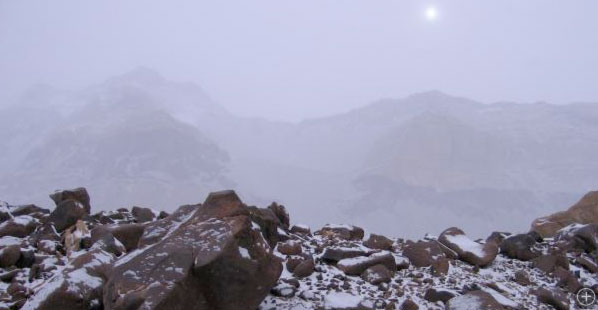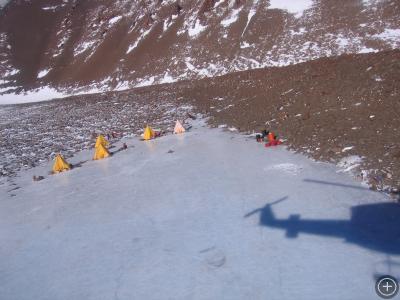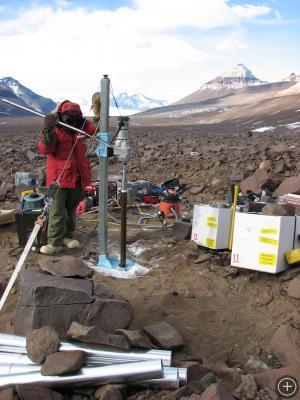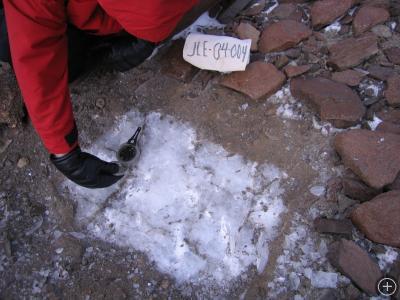
Investigating buried glacier ice in the McMurdo Dry Valleys
A collapse of the Antarctic ice sheets would raise global sea levels approximately 180 feet (60 m) with devastating consequences for near-shore and low-elevation communities. To better understand the response of the Antarctic ice sheets to future changes in climate, quantitative geomophologist Doug Kowalewski and colleagues from Boston University are working to understand the ancient climate of Antarctica and the corresponding stability of the glaciers and ice sheets. Buried alpine glacier ice was discovered two decades ago in the McMurdo Dry Valleys, a predominantly ice-free region roughly the size of Rhode Island. The buried glacier is allegedly the oldest on earth with an age of more than 8 million years; that would be almost ten times older than ice currently being cored from the Antarctic ice sheets.
If the ice is indeed that old, gases trapped within the buried glacier ice represent a potential archive of climate data stretching back to the time of the earliest hominids. Doug Kowalewski (UMass, Amherst) along with colleagues from Boston University, Brown University and Colgate spent October to December camped in Beacon Valley (77.859 S, 160.574 E) coring the alpine glacier ice. The ice cores were shipped to Boston and Princeton universities where analysis of the trapped gases will provide a more robust chronology for the glacier and provide insight about past atmospheric temperatures and precipitation.
To establish further evidence that buried glaciers can persist for over 8 million years in the dry, albeit cold environment of Antarctica, Doug conducted in-situ experiments and modeling studies to calculate the existing rate of glacier ice sublimation (the change of state from solid directly to gas, a process that slowly reduces the size of glacier and over time may eliminate the glacier completely). Doug also ran regional climate model simulations at the UMass Amherst Climate System Research Center to resolve whether sustained cold climate conditions necessary for long-term ice preservation occurred during the lifetime of the glacier specifically during warmer times in Earth’s history (episodes of higher atmospheric CO2 and increased solar radiation due to Earth’s orbital changes). For model input, Doug and his colleagues monitored atmospheric temperatures, wind speed, amount of solar radiation received, and relative humidity. Glacier ice temperatures and overlying rock and soil temperatures were monitored in Beacon Valley. These modeling efforts provide increased evidence that buried ice and a super-arid, cold-polar climate have sustained in parts of Antarctica for millions of years.













